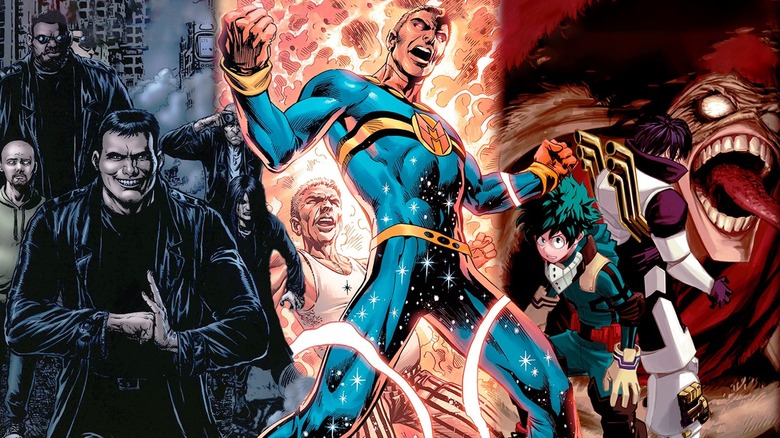
"Invincible," the animated series based on the hit comic book series by "The Walking Dead" co-creator Robert Kirkman, Cory Walker, and Ryan Ottley, was a major success for Prime Video. But what to read between seasons if you can't get enough of bombastic teenaged superheroics? Well, there are at least 14 different comic books that should scratch that itch, including both series that influenced "Invincible" as well as stories that have something to say about the world of superheroes — and the one we live in.
Of course, it goes without saying that one of the titles that should be on your reading list is "Invincible" itself. The series wrapped up in 2018, so it's a complete saga — just be aware that you'll be spoiling the rest of the animated series for yourself! That's hardly a problem, though; this is a story that's worth experiencing twice.
Miracleman
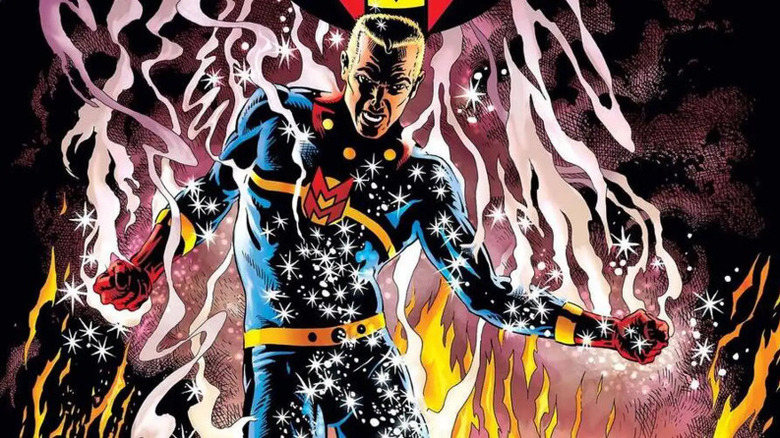
Long before Alan Moore became world-famous on the heels of "Watchmen," he and artist Garry Leach published a darker, more realistic take on an old British hero named Marvelman. The series launched in 1982 in the short-lived UK magazine "Warrior," which also hosted another of Moore's works, "V For Vendetta." However, due to complaints from Marvel, the title of the book was changed to "Miracleman" when Eclipse Comics brought the series to the USA in the mid-'80s.
After 16 issues, Moore passed the series on to then-relative newcomer Neil Gaiman. However, after issue #24 came out in 1993, Eclipse ceased operations, and the story was left hanging. Now, Gaiman and artist Mark Buckingham are finally getting the chance to continue their story — ironically, at Marvel, which has reprinted the entire series to date, albeit with Moore's name taken off at his behest. As a massively influential look at superheroes as god figures and what happens to society because of them, "Miracleman" clearly inspired much of the destruction and carnage of the battle between Invincible and ... well, you know who ... in the "Invincible" season 1 finale.
The Ultimates
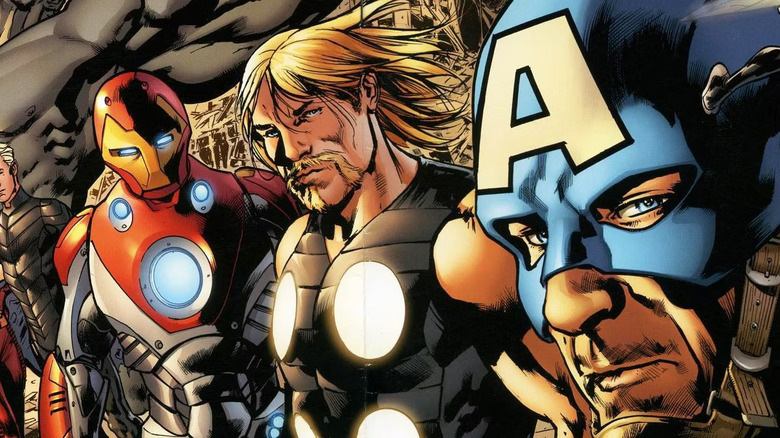
In the early years of the 21st century, Marvel debuted its Ultimate line, featuring fresh and streamlined takes on its characters and their decades-long continuity. It was a way for the publisher, which was having a renaissance after filing for bankruptcy in the 1990s, to recreate their top characters in a modern context without rebooting their entire line. We'll discuss the first, and most acclaimed, of the Ultimate comics later. However, for sheer "Invincible"-esque bombast — and discomfort — you can't get much bigger than Mark Millar and Bryan Hitch's "The Ultimates," which follows this universe's version of the Avengers.
This explosive, widescreen comic was popular enough to influence the early Marvel Cinematic Universe movies; it even features the alien villains of the first "Avengers," the Chitauri, although they take on a slightly different form here than they did on screen. The characterizations of Captain America, Thor, Iron Man, Black Widow, the Hulk, and the rest are much edgier than they were in the mainstream Marvel books that preceded "The Ultimates," and not always for the better. That said, this series is definitely of its time, with a plot focused on a superpowered version of the war on terror, which cast a shadow over all pop culture in the 2000s.
Super Sons
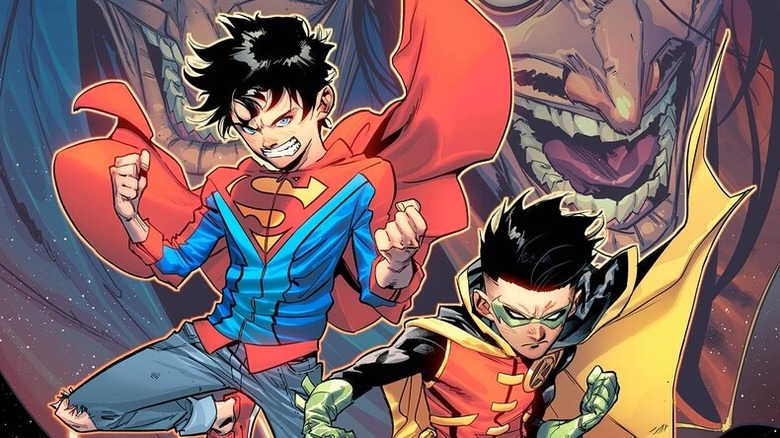
The team-up between Superman and Batman's sons is not new; the first published iteration of the Super Sons dates back to 1973. Peter J. Tomasi, a writer who has written extensively for DC, including stints on both Superman and Batman, revived the concept for DC's Rebirth phase in 2016. This time, "Super Sons" pairs the Rebirth-era iteration of Superboy, Jonathan Kent, with the Damian Wayne Robin for a 17-issue run chronicling their adventures.
Tomasi's series, which features art from Jorge Jimenez, Paul Pelletier, Alisson Borges, and others, has now been collected into an omnibus by DC. If the son of Superman (who eventually became Superman in the current DC comics, although not without controversy) doesn't sound familiar after watching "Invincible," I'm not entirely sure what to tell you. And hey, you'll get Batman's kid as part of the package, too. An animated movie based on "Super Sons" was released in October 2022, featuring Jack Dylan Grazer and Jack Griffo as Jonathan and Damian, respectively.
My Hero Academia
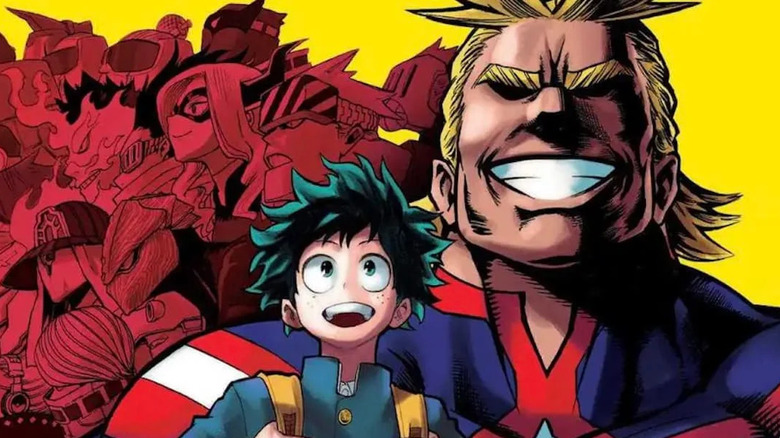
An extremely popular manga and anime, Kohei Horikoshi's "My Hero Academia" ticks many of the same boxes as "Invincible." Teenage superheroes and villains? Check. World-shattering battles? Check. Drama between super-fathers and their super-sons? Check.
In a world where almost everyone has a "quirk" that gives them a super ability, Izuku Midoriya was born powerless. However, after Midoriya shows off his selflessness in a dangerous situation, the world's greatest hero, All Might, makes Midoriya the inheritor of his quirk, One For All. This sets off a chain of events that leads Midoriya to a confrontation with the villainous Tomura Shigaraki, who now possesses the inverse of All Might's quirk, All For One.
"My Hero Academia" is a love letter to American superhero comics, and is one of the most sincere entries in the genre in the last 20 or so years. Creator Horikoshi even draws All Might like an American superhero from the '90s. Of particular note for "Invincible" fans is the ongoing drama involving the number-two-ranked hero, Endeavor, and his sons, especially Todoroki. Also, there's a girl whose powers mimic the abilities of a frog. How can you not dig that?
One-Punch Man
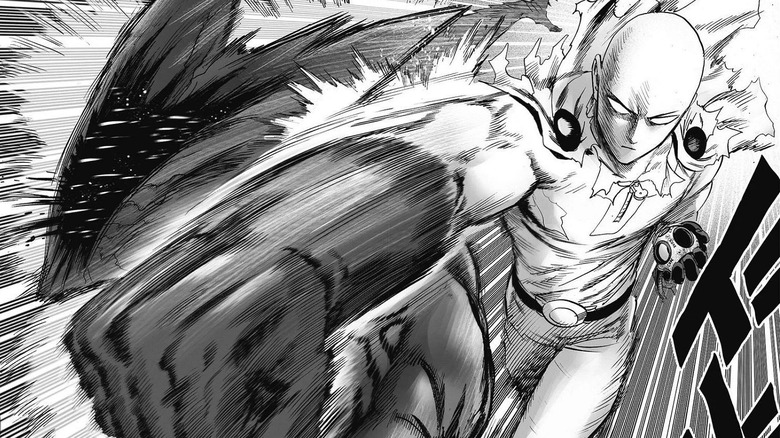
What do you do for excitement when you're so powerful that you can win every battle with a single punch? This is the dilemma faced by Saitama, the titular One-Punch Man, who has a costume and everything but can't seem to find a foe worthy of his powers. This comedic send-up of superheroes began in 2009 as a poorly drawn webcomic by ONE, before finding wider popularity when the chapters were redrawn by "Eyeshield 21" artist Yusuke Murata and released digitally by Shueisha, the publishers of "Weekly Shonen Jump" in Japan.
An anime adaptation was released in 2015. This was also a runaway hit, as smashing as its gigantic battles, which "Invincible" viewers certainly won't say no to. However, the spoof is the series' main focus, and things don't get nearly as gory as they do on "Invincible." That said, the satire hits many superhero story tropes, including father-son dynamics and sibling rivalries, that will be very familiar to "Invincible" watchers.
JoJo's Bizarre Adventure
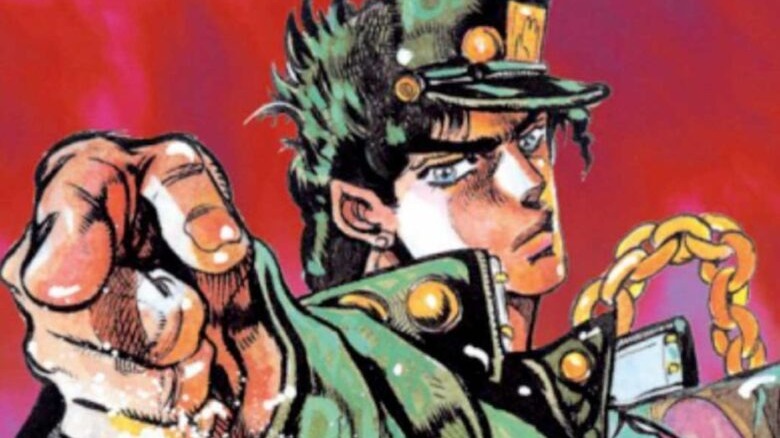
If you enjoy the generational saga of "Invincible," Hirohiko Araki's "JoJo's Bizarre Adventure" should scratch the same itch. Beginning in 1987, the long-running series has detailed the conflicts between the Joestar and Brando families over eight different story arcs. Each one focuses on a new iteration of one of those two families, with some plotlines unfolding in another universe entirely.
The story moves away from its focus on mystical martial arts during the third arc, "Stardust Crusaders," which introduces superpowered avatars called Stands. The series has only grown in popularity worldwide over the years. It keeps evolving with each arc; so does Araki's art. In fact, Araki's work has even been featured in official Gucci advertisements and the Louvre!
Six arcs of "JoJo's Bizarre Adventure" have been published in the USA. Those same six have also been adapted into an anime, and the fourth arc, "Diamond Is Unbreakable," was made into a live-action movie by director Takashi Miike. Meanwhile, the ninth arc, "JOJOLANDS," is on its way in Japan. It's an epic series, and fans of "Invincible" will appreciate the wide scope of the adventures, battles, and strange abilities on display.
Ultimate Spider-Man
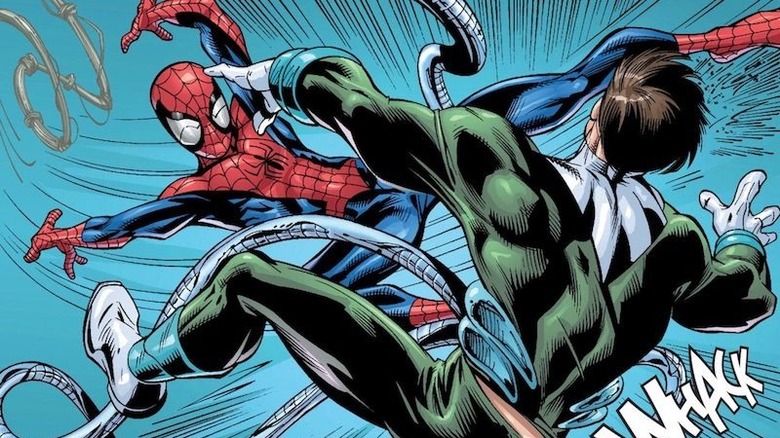
As detailed above, "Ultimate Spider-Man" was the first entry in Marvel's Ultimate line, and went on to become one of the most popular comics of the 2000s. Writer Brian Michael Bendis, then a relative newcomer to Marvel, and artist Mark Bagley, already considered one of the greatest Spider-Man artists ever, modernized the origins of Peter Parker, Aunt May, Mary-Jane Watson, and the rest. Like "Invincible," Spider-Man has always been closely tied to his family, particularly his guilt over Uncle Ben's murder. Making Spidey a teenage hero again, just as he was during his original appearances, really drives the point home.
"Ultimate Spider-Man" was a smash success that set the stage for Ultimate versions of the Avengers, the X-Men, and the Fantastic Four, among others. It also established the tone for this edgier version of the Marvel Universe. But that's not all "Ultimate Spider-Man" is known for. Bendis and artist Sara Pichelli relaunched the title in 2011 while introducing a new Spider-Man for the modern age: Miles Morales. Miles proved so popular that he was brought into the main Marvel continuity, and was the star of the animated blockbuster "Spider-Man: Into the Spider-Verse."
Young Avengers
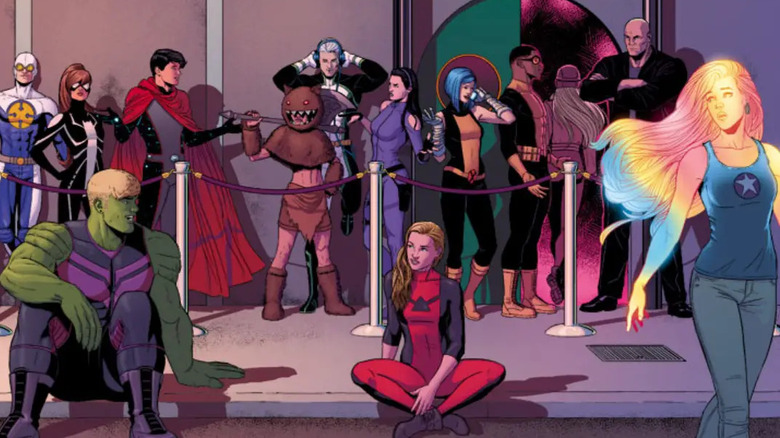
What happens when a team of teenage superheroes are forced to finally grow up? That's the question posed by 2013's "Young Avengers," written by Kieron Gillen and drawn by Jamie McKelvie, the team behind the cult indie comic "Phonogram." Super kids take on their super parents in this run, which echoes "Invincible," but that only scratches the surface of the book. Maturity, honesty with oneself, LGBTQ+ relationships, and more mundane-yet-pertinent ideas sit are at the heart of this acclaimed series. There's also a teenager who can kick open portals to other dimensions, just in case you're looking for that sense of super-powered wonder.
While the Young Avengers have had a devoted following since Allan Heinberg and Jim Cheung introduced the team in 2005, Gillen and McKelvie's 15-issue run received rave reviews, and was a best-seller as well. The team was able to parlay the success of "Young Avengers" into what many consider their magnum opus, "The Wicked + The Divine," which was published by Image Comics. Gillen and McKelvie's "Young Avengers" also won the 2014 GLAAD Media Award for outstanding comic book, topping the likes of DC's "Batwoman" and Archie Comics' "Life with Archie," which features the company's LGBTQ icon, Kevin Keller. It was the second time the series had done so; Heinberg and Cheung's run also won the award in 2006.
The Boys
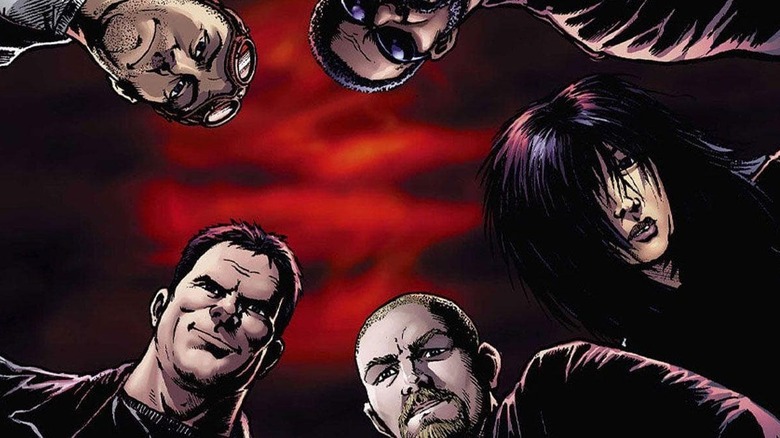
What if America's greatest heroes were actually amoral jerks? And, in that case, who could possibly put a stop to their destructive antics? That's a formula that has birthed many comics since the late 1980s, and it worked out particularly well for Garth Ennis and Darick Robertson's "The Boys." Initially deemed too hot to handle by DC's Wildstorm imprint, the comic moved to Dynamite and ended up being a huge hit for the creators and the publisher.
Much like "Invincible," "The Boys" centers violence, wanton destruction, and an informed dissection of superhero tropes in a big way. Also like "Invincible," "The Boys" was a major success for Prime Video, with three seasons available at the time of this writing. Much like the TV series it spawned, "The Boys" is very edgy, its humor can be extremely crass, and its sex and violence go way over the top. Underneath it all, however, is a potent commentary on American domestic and foreign policy post-9/11. Not everyone will agree with its politics, but you'll find yourself unable to look away regardless.
Teen Titans: The Judas Contract
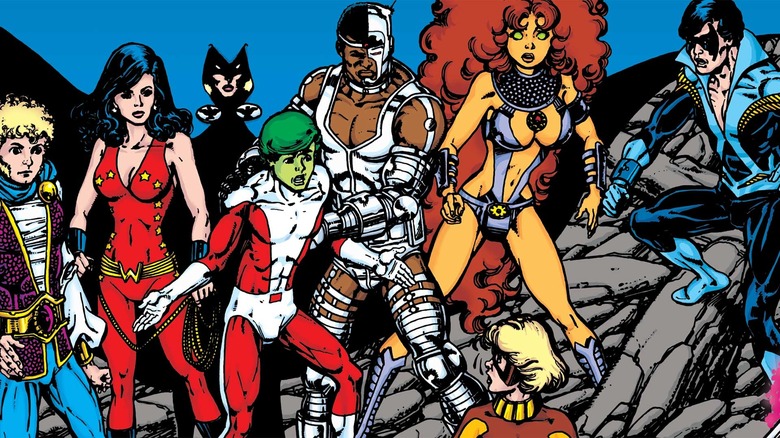
The "Judas Contract" storyline from "New Teen Titans," which was written by Marv Wolfman and illustrated by George Perez in 1984, is considered one of the highest peaks of the teenage superhero genre. This one has everything. The Titans are infiltrated and nearly destroyed by one of their greatest adversaries. Dick Grayson finally abandons the Robin costume on his way to becoming Nightwing. Another hero leaves the Titans altogether. It was a seismic storyline, and a very influential one. "Invincible" viewers know the pain of being betrayed by a trusted comrade very well; in that regard, this story was groundbreaking.
As in "Young Avengers," the members of the Titans must grow up in a major way. The story won the "favorite comic book story" award from the Comics Buyer's Guide Fan Awards in 1984, and the characters proved so popular they received a second monthly comic from Wolfman and Perez later in the year. The storyline has been adapted twice into other media: once as a storyline on the 2003 "Teen Titans" animated series, and again in 2017 as one of DC's animated feature films.
Marshal Law
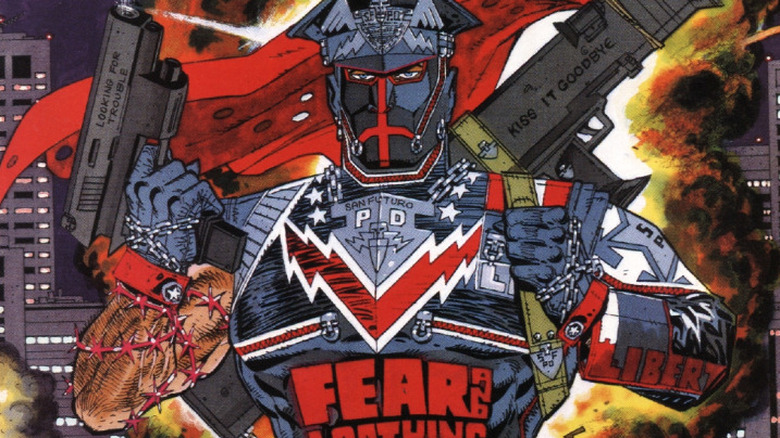
If you thought "The Boys" despised superheroes, check out "Marshal Law." In 1987, British creators Pat Mills and Kevin O'Neill brought a seething hatred of the superhero genre to comics long before it was fashionable to do so.
The series follows a former supersoldier who gleefully accepts a job as a leather-and-barbed-wire-clad super-cop in order to police his fellow super-veterans. His biggest case comes when he takes on Sleepman, a "hero" who's raping and murdering women dressed like a certain superheroine. The good Marshal suspects the villain is really America's greatest hero, the Public Spirit. Scathing in its commentary and ultra-political, "Marshal Law" may not be to everyone's tastes. Still, it shares a lot in common with "Invincible" in its grit, bombast, and violence. It even takes the whole teenage superhero trope to task.
"Marshal Law" went through many publishers in its time. It began at Marvel's Epic imprint, then bounced around several other companies, including Dark Horse and Image. Along the way, it crossed over with other comics properties, including "Hellraiser," "Savage Dragon," and "The Mask." The last new adventures for the character were published at a now-defunct early internet comics website, Cool Beans World, in 2000. DC Comics published an omnibus edition of the series in 2013 — leaving out the crossovers with other companies' characters, of course.
If you or anyone you know has been a victim of sexual assault, help is available. Visit the Rape, Abuse & Incest National Network website or contact RAINN's National Helpline at 1-800-656-HOPE (4673).
Brat Pack
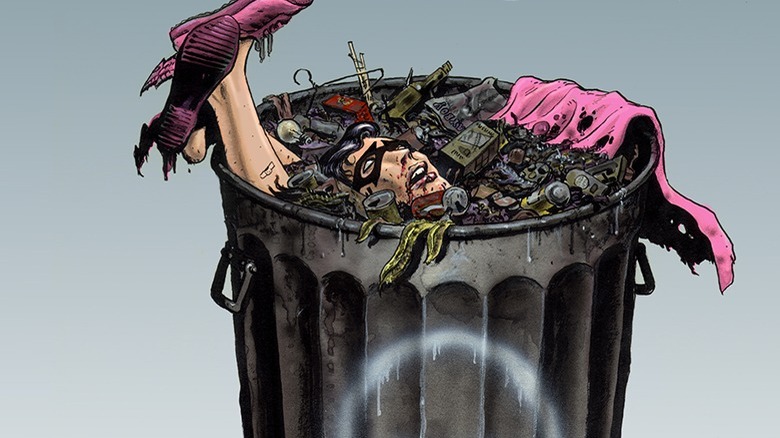
The deconstruction of superheroes in popular media began in earnest with the publication of Frank Miller's "Batman: The Dark Knight" and Alan Moore and Dave Gibbons' "Watchmen." "Brat Pack" is a companion to these seminal titles, self-published by writer-artist Rick Veitch following his controversial departure from DC's "Swamp Thing." Veitch's comic casts a critical eye on the entire notion of the teen superhero, specifically the disposable teen sidekick. It was published following a telephone poll conducted by DC to determine whether Robin lived or died in a then-current "Batman" storyline. The series' tagline was even "Live fast, love hard, die with your mask on." You can read that ethos into "Invincible," too, although that's not necessarily a good thing.
Like "Marshal Law," "Brat Back" can be a tough read, as it doesn't shy away from transgressive content — the edginess of "Invincible," coupled with the subject matter, makes it one of this book's direct descendants. Ultimately, however, this is a rewarding read that makes you think about how healthy teen superheroes really are, as well as the genre itself. It also resulted in one most recognizable images in comics in the 1990s: the vertical "@#*!" symbol worn by the series' ostensible villain, Dr. Blasphemy.
Wanted
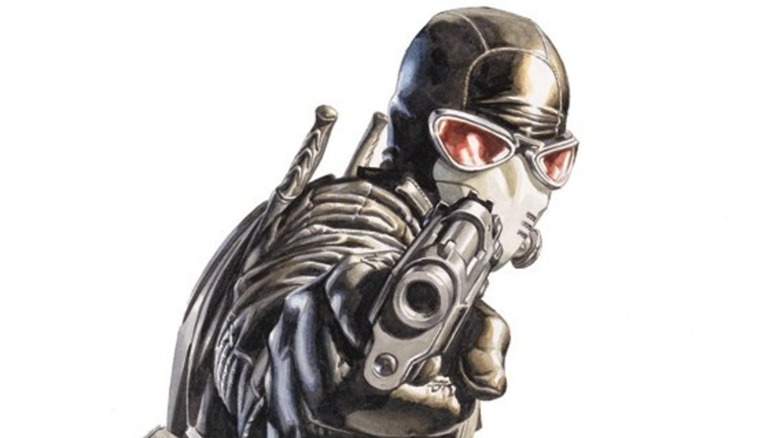
The comics we've covered so far have mostly focused on teenage superheroes or older heroes' offspring, which together form the root of "Invincible." Let's take a look at the flip side of that coin with a story that focuses on the son of a villain instead (although it's a comic that shares an affinity for over-the-top content with "Invincible").
What would you do if you found out you're the kid of the deadliest assassin in history, and that your father was one of the supervillains who successfully conquered the entire planet? That's the story told in Mark Millar and J.G. Jones' "Wanted." Wesley Gibson, stuck in a menial job and a bad relationship, discovers he is actually the son of The Killer. Further, he's inherited his dad's killing abilities. He's brought into the ruling Fraternity, but all hell breaks loose when one of the secret society's main villains decides he wants a bigger piece of the action.
A movie based on the comic came out in 2008, starring James McAvoy, Angelina Jolie, and Morgan Freeman, but it removed all mentions of supervillains and superheroes, which were the blood of the comic. In hindsight, that seems like an odd creative choice, considering that the film came out just before the Marvel Cinematic Universe became the dominant pop culture force for the next decade.
House Of X And Powers Of X
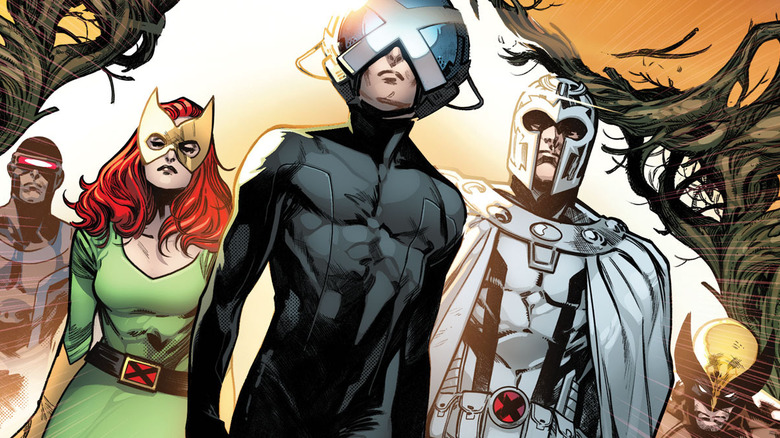
After spending a few years producing creator-owned work, Jonathan Hickman returned to Marvel in 2019 with his biggest idea yet: What would happen if all of Marvel's mutants, from the X-Men to their most hated adversaries, banded together on the living island of Krakoa and formed their own country, one with a language and culture all its own? And how would the rest of the Marvel Universe react to a new sovereign mutant nation? Those were the questions that Hickman initially raised in two concurrently published miniseries, "House of X," which was illustrated by Pepe Larraz, and "Powers of X," a collaboration with artist RB Silva.
Plenty of intrigue results, of course, both within Krakoa and without as forces gather to deal with this situation. Are Charles Xavier and Magneto, having buried the hatchet, being forthcoming about all that happens on Krakoa? Or are there secrets about this new island nation that will shake the world to its core? Will a stunning betrayal destroy Krakoa, as Invincible himself was so shockingly betrayed in his series' first season finale?
With story threads that unfold 10, 100, and 1,000 years into the future as well as the present day, Hickman's X-Men run is a sprawling epic, one that "Invincible" fans will easily find themselves drawn into. While it stands up on its own as a complete work, "House of X" and "Powers of X" formed the foundation for Marvel's big X-book relaunch. The story they kicked off continues to this day, even though Hickman has left to tackle other projects.
Read this next: 9 Filmmakers Who Should Be Given Free Rein In The MCU
The post Comics To Read If You Love Invincible appeared first on /Film.
0 Commentaires